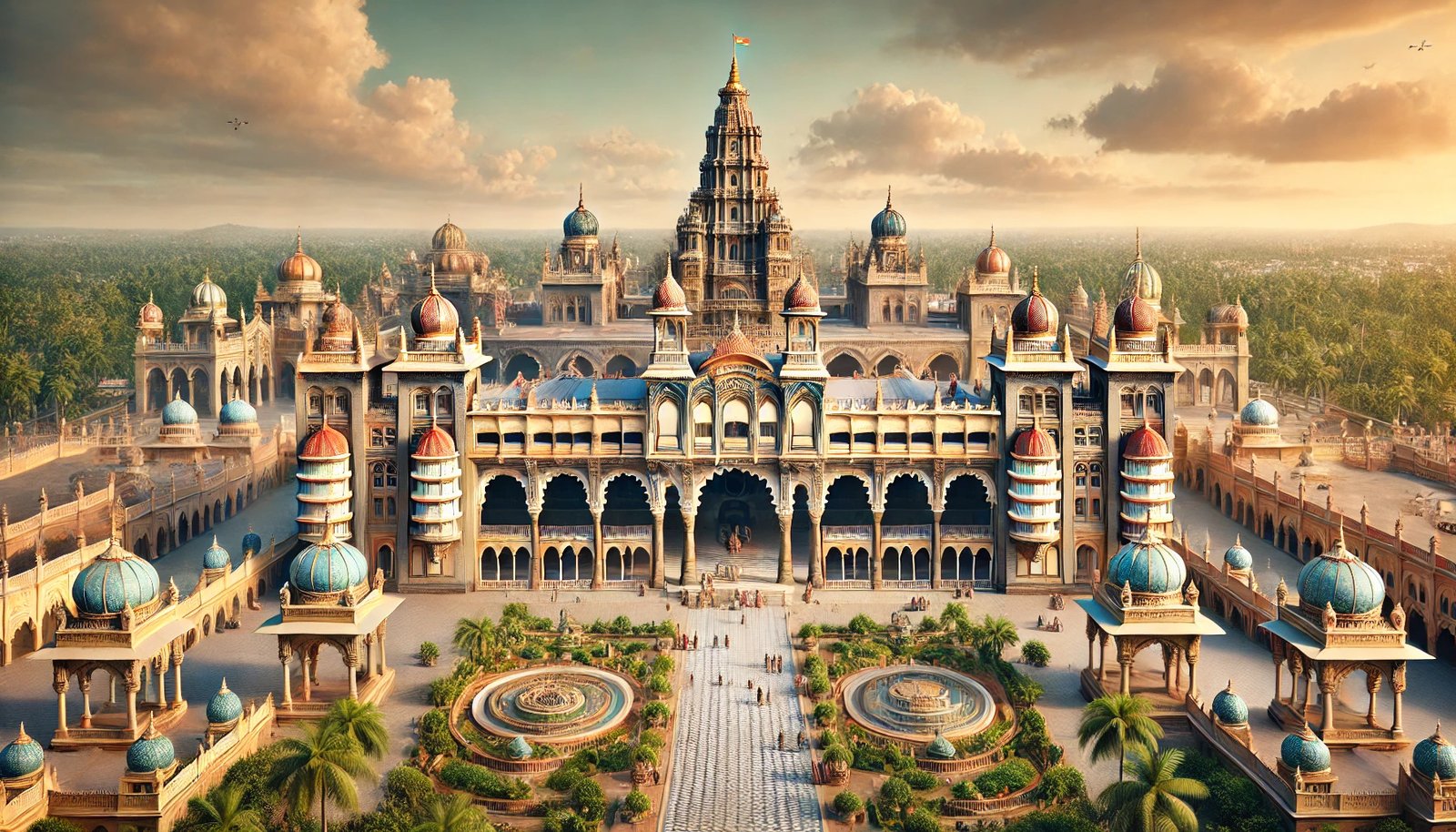Introduction
In his seminal work “Architecture: Form, Space and Order,” D.K. Ching articulates that form transcends mere physical shape, delving into the relationship between spaces and the cultural significance a structure embodies. This principle is exquisitely exemplified in one of India’s architectural masterpieces – the Mysore Palace.
Indian palaces are visual narratives of grandeur and power, with spatial dynamics, symmetry, and intricate details highlighting the royal opulence of various dynasties. Mysore Palace, an architectural marvel, seamlessly integrates Hindu, Muslim, Rajput, and Gothic styles, showcasing an extraordinary aesthetic fusion. The arches, domes, colonnades, and turrets create a grand cohesive visual impact.
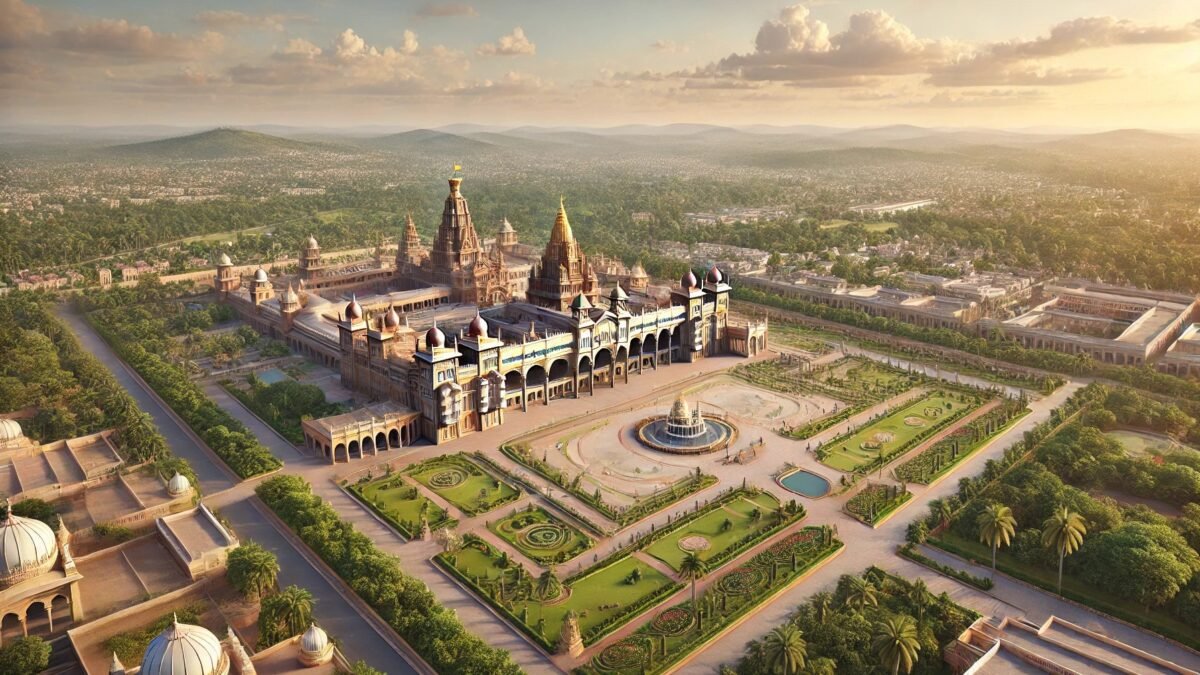
Symmetry, Hierarchy, and Scale
Applying D.K. Ching’s principles, Mysore Palace’s design embodies symmetry, hierarchy, and scale. The palace facades, with evenly spaced domes and arches, reflect a balance through a symmetrical layout. Hierarchy is evident in the prominence given to key spaces such as the royal chambers, while the expansive courtyards and towering domes highlight scale.
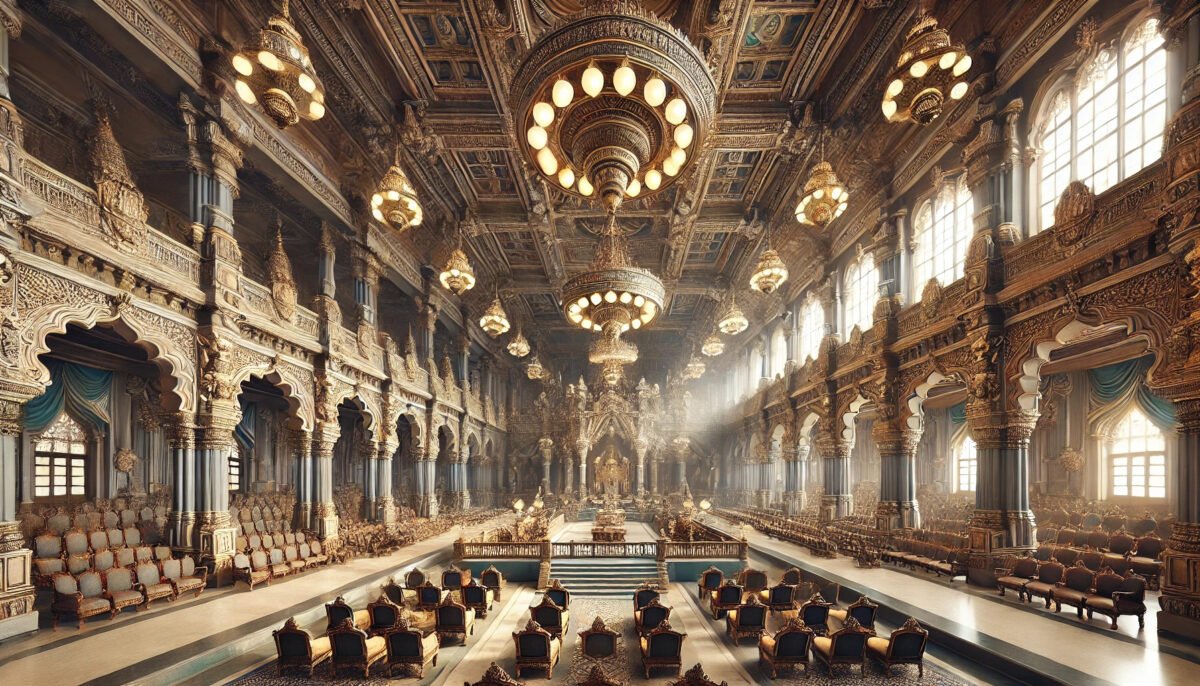
Form Follows Function
Ching’s principle that form follows function is vividly apparent in Mysore Palace. Each space within the palace serves a specific purpose with well-planned layouts. The Durbar Hall, designed for public gatherings, and the private quarters for the royal family exemplify functional efficiency combined with architectural elegance.
Symbolism and Narratives in Architecture
Ching emphasizes that architectural forms convey deeper meanings and narratives, a concept well-illustrated by Mysore Palace. The palace’s decorative elements are laden with symbolic meanings. The domes, adorned with celestial and divine motifs, narrate tales of mythology and history. Detailed carvings and vibrant colors create a dynamic interplay of forms, resulting in an architectural identity that is both visually stunning and culturally rich.
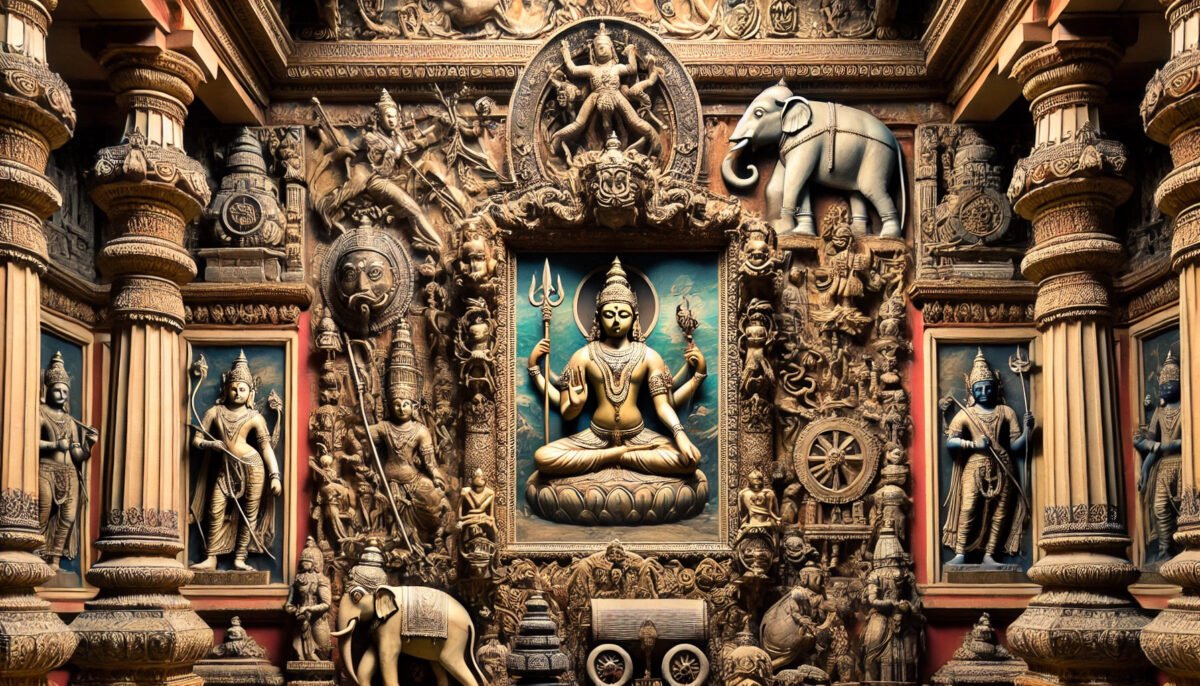
Fig3 : The Intricate Artistic Carvings Depicting Stories And Symbolisms.
Architectural Details and Cultural Significance
Both the interior and exterior of Mysore Palace are adorned with intricate carvings and designs, each telling a story of its own. The palace’s vibrant colors and detailed artwork provide a sophisticated spatial experience, narrating tales of mythology and history. This architectural masterpiece stands as a testament to the harmonious blend of various architectural styles and cultural narratives, making it a pride of India.
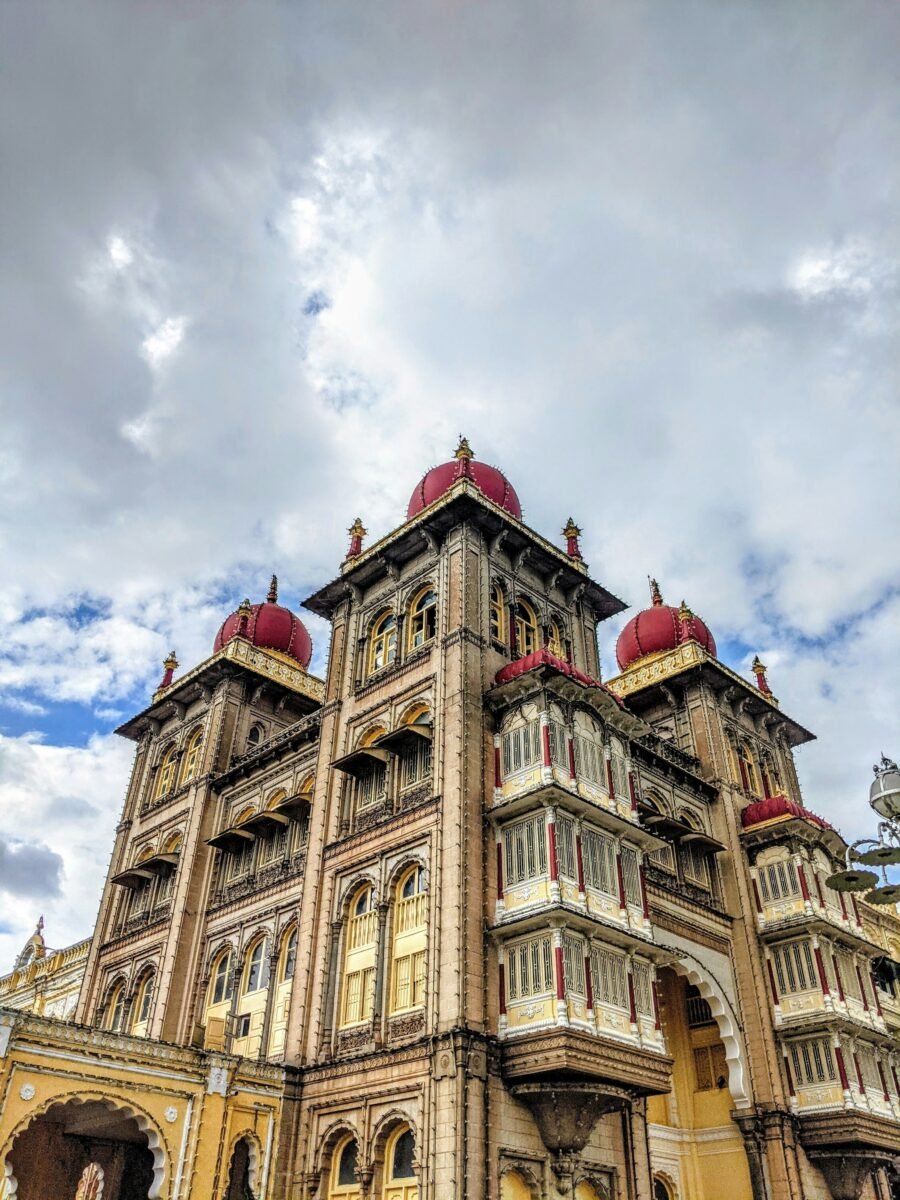
Conclusion
Mysore Palace epitomizes the principles articulated by D.K. Ching, where form, space, and cultural significance converge to create an architectural wonder. The palace’s design, functionality, and rich symbolism together define the beauty of form brought to life, solidifying its status as one of India’s most magnificent structures.
Bibliography
– D.K. Ching (2007). Architecture: Form, Space and Order (third edition)
– Government Of Karnataka. The Mysore Palace. https://mysorepalace.karnataka.gov.in/architecture.html
– Encyclopedia Britannica. Mysore Palace. https://www.britannica.com/topic/Mysore-Palace
– Wikipedia. Mysore Palace. https://en.wikipedia.org/wiki/Mysore_Palace
